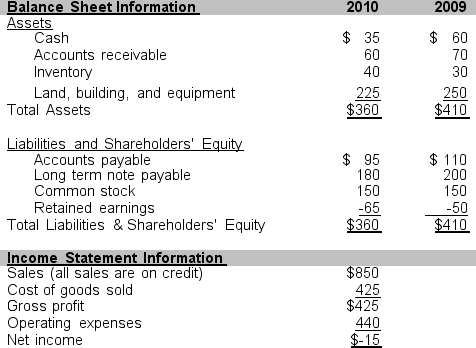Use the information that follows taken from Campbell Company's financial statements for the years ending December 31, 2010 and 2009 to answer problems 45 through 48.

-Calculate Campbell's return on equity and return on assets for the year ended December 31, 2010. Assume that the income tax rate is 30%. Also assume that in Campbell's industry, the industry average return on equity is 19% and the average return on assets is 11%.
Definitions:
Financing Activities
Transactions that result in changes in the size and composition of the equity capital or borrowings of the entity, as reported in a company’s cash flow statement.
Non-current Liability
Liabilities that are not due within the next twelve months, such as long-term loans, bonds payable, and deferred tax liabilities.
Short-term Loans
Loans scheduled to be repaid in less than a year, typically used for immediate cash flow needs or small-scale expenses.
Cash Flows
Cash flows refer to the inflows and outflows of cash and cash equivalents, representing the operating, investing, and financing activities of an entity during a specific period.
Q2: Under generally accepted accounting principles, a company
Q6: Which one of the following is most
Q33: What financial statement shows where the money
Q45: Briefly describe the solvency and profitability of
Q49: Calculate Monroe's depreciation expense and loss (gain)
Q58: Inventory reported on the balance sheet of
Q61: The information below was taken from the
Q70: For each cost numbered 1 through 8
Q80: The most common point of revenue recognition
Q100: On January 27, 2010, Lock Company entered